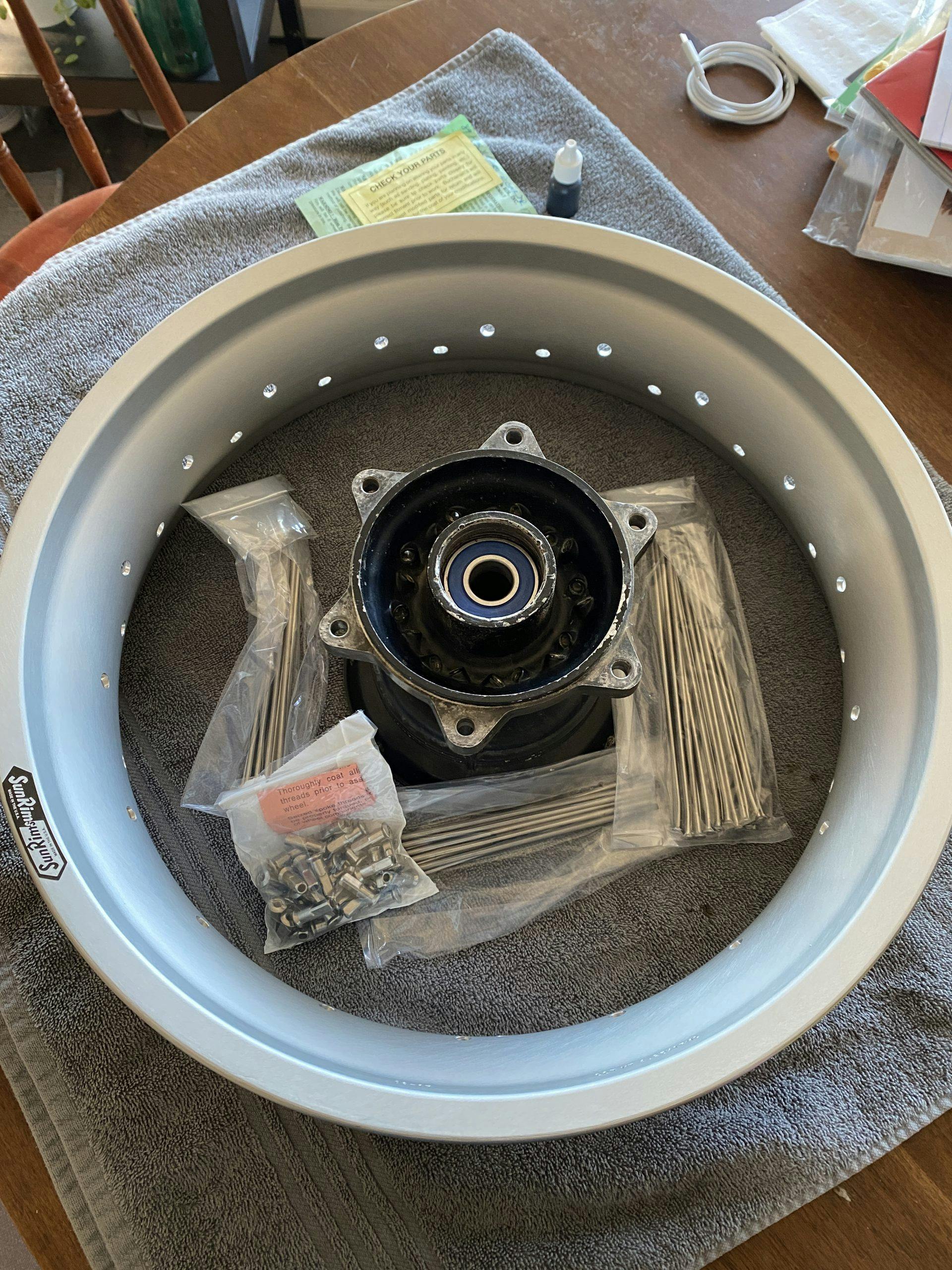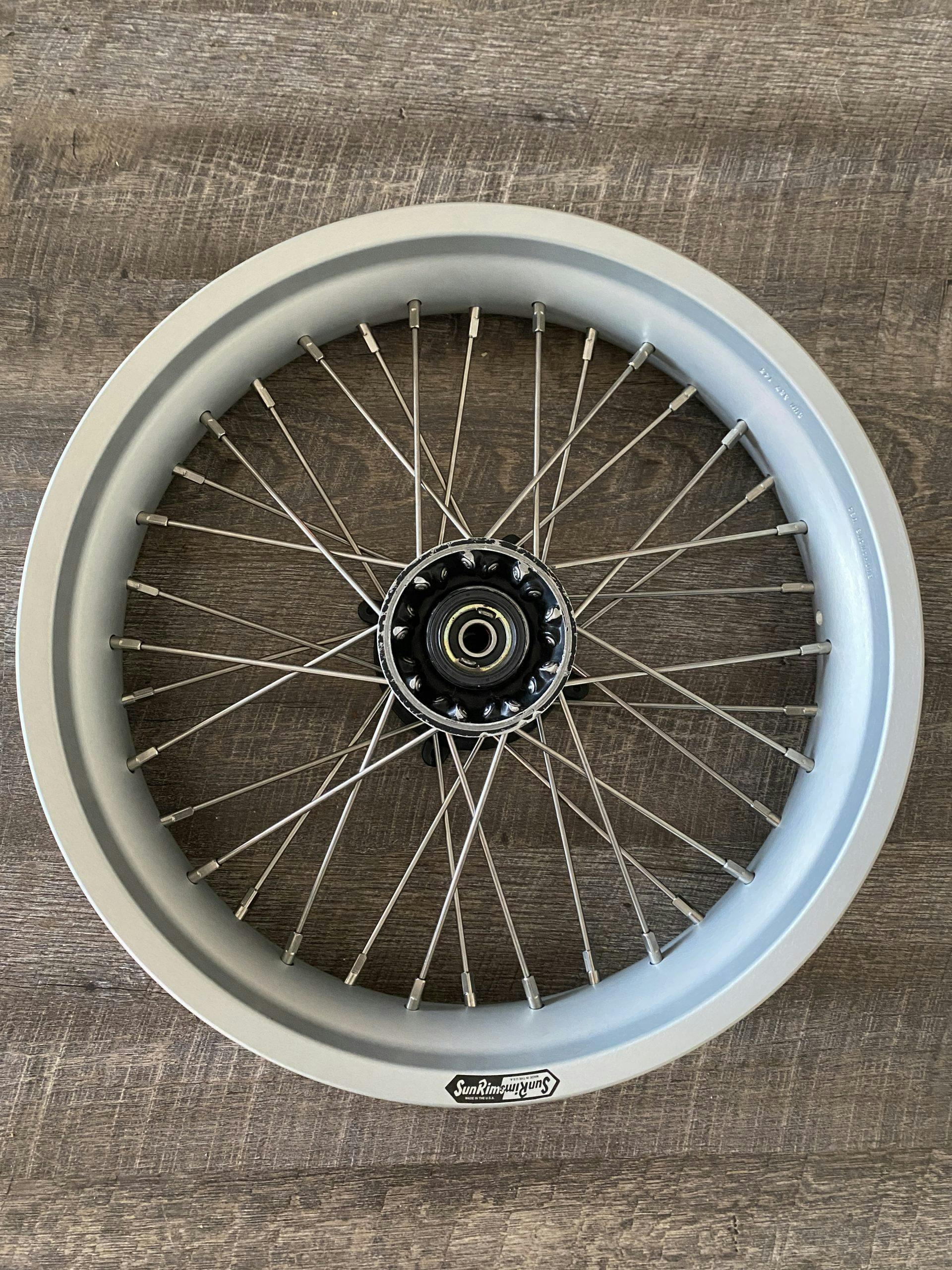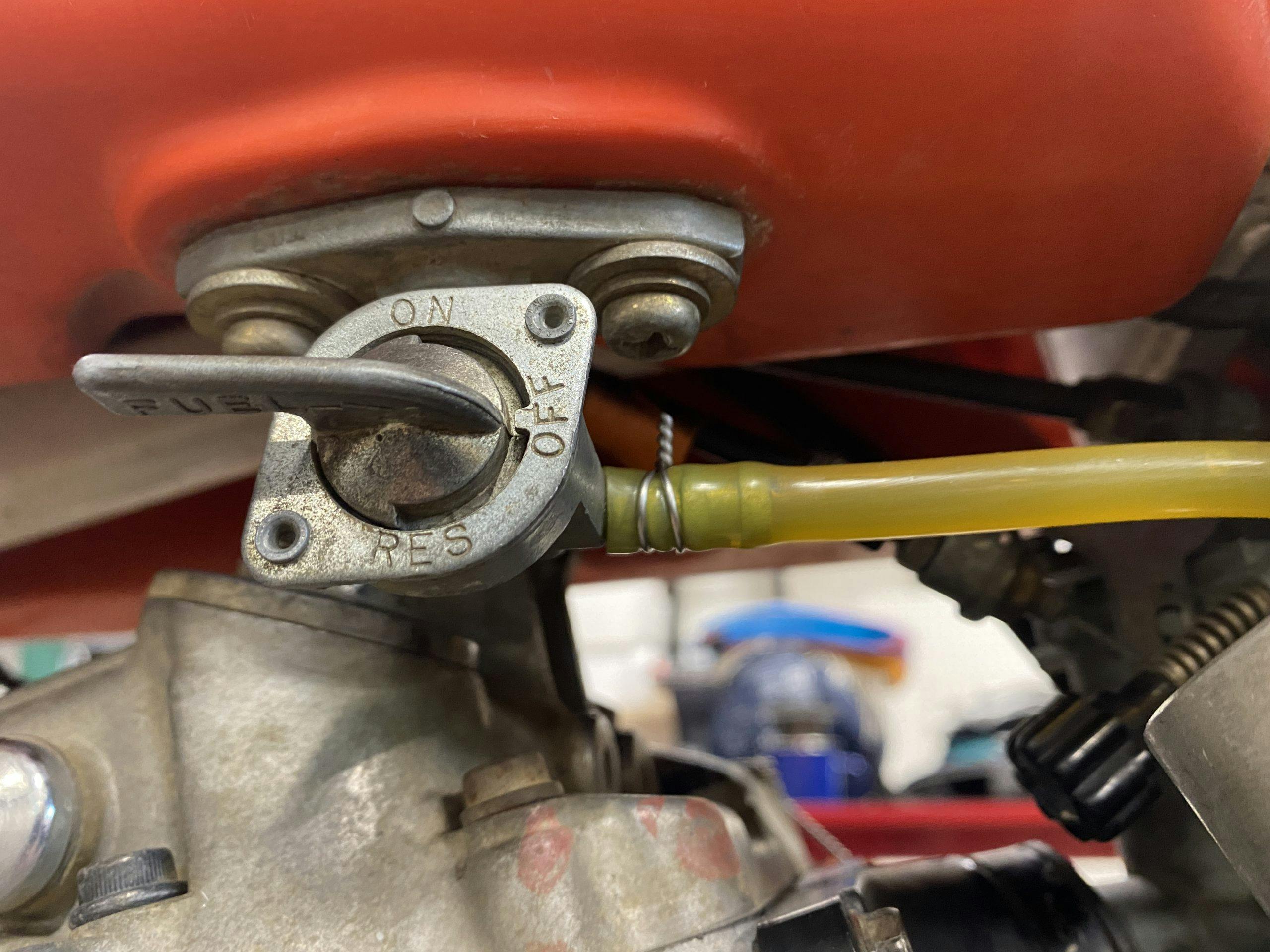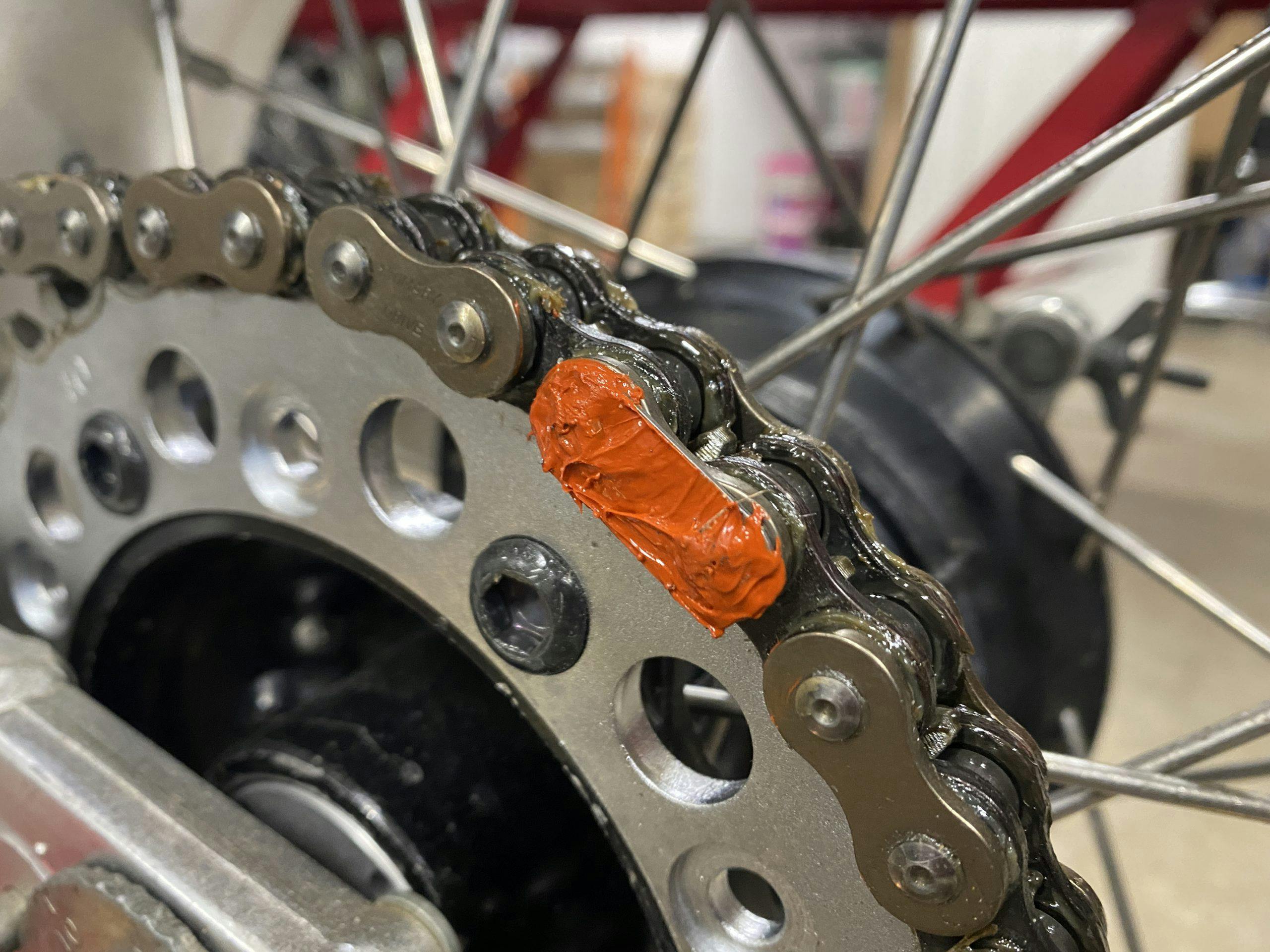Why I bolted a baking pan to my Honda XR250R

The beauty in being an idiot is that you don’t know what you are doing is idiotic. Lately, I have been envious of those less intelligent—or is it more smarter?—than myself. The first two parts of the Six Ways to Sunday racing project this year were the easiest: build the XR250R up and race motocross and cross country at Heartland Park. Those racing disciplines were very close to what the XR was designed for. Now I’m moving forward with the project, and my plan is to to take the aging 250 out onto race courses it was never meant to see—the first of which is the two-mile, 11-turn pavement of Gingerman Raceway—and getting the bike ready for that took time, research, and effort.
As previously mentioned, the XR250R was originally designed and built with the thought that it would be mainly used on surfaces like rocks and loam. It could give freedom to those in search of a vehicle to explore on. The XR series quickly earned a reputation of being durable, reliable, and capable. It was never known as fast, sporty, or sharp. To make it those things is going to require some radical changes, along with some subtle ones.
The wheels
The 18-inch rear and 21-inch front hoops are a great combination for an off-road machine. The large front wheel creates a great gyroscope at speed to keep the whole machine upright and makes for stable direction changes. Changing the diameter of that big gyro is the simplest way to radically alter the handling characteristics. Downsizing to 17 inches on both lowers that gyro effect but also allows me to fit tires meant for the roadracing task at hand.
This change was not one that could be done with the swipe of a credit card. With the drum rear brake, there are no aftermarket hubs, and thus I had to rummage my parts stash to find a usable set of hubs that I could lace up a new set of rims to. The process is fairly simple and just took a bit of patience to knock out.
The brakes

This is one area where the XR is struggling. Though the 250 thumper makes good power for off-road racing, it will be struggling to hit competitive speeds on Gingerman’s front stretch. Even as slow I as I expect it to be, it will be significantly faster than the bike was designed to do. Hauling the whole package down to a speed that I can then turn through the corners is important. Really important.
That’s why I got my calipers out and starting doing some measuring. The XR250R has a few generations, and the 1986–95 generation is not nearly as popular as the 96-up when it comes to aftermarket parts. After staring at a lot of pictures on the internet, it crossed my mind that the front hub of the later bikes looked awful similar. Almost identical. That prompted me to look up the measurements for the massive 320mm Motomaster front brake rotor and billet caliper that is advertised to fit the European ’96-and-up bikes. All the numbers lined up, so I placed the order, crossed my fingers, and sat in the driveway like a kid waiting for Santa to arrive.
Not only did the huge rotor bolt right up, the caliper relocation bracket, caliper, and race-ready pads all cinched down with no fuss. A quick bleed of the system and it is not only looking the business, but ready for business. The rear was disassembled and inspected. The brake shoes only had a few hours of riding on them and have tons of life. I’ll throw a spare set into my track toolkit, but I don’t expect to consume them over a single weekend.
Suspension

The specialized nature of supermoto racing means that most factory suspension valving and spring rates end up making for a goofy handling machine after the changeover. Rather than try and “ride around” the handling, I elected to have Race Tech set up another set of suspenders for the XR. This set is identical externally, but internally it has valving and spring rates better suited for the smooth pavement of a road course. Some fine tuning with the factory adjustment points will likely be required, but this baseline is markedly better than trying to run the motocross-tuned set I used for the Heartland races.
Engine

There was an odd cold-start issue that plagued the XR at Heartland. Even with my familiarity with the XR engine family, I couldn’t quite place what was going on. Over the last few weeks I dove in and touched just about everything. The valve lash had loosened up significantly from the adjustment I did after the break in. This makes sense that the first few hours of a new engine might find a few things moving around and finding their stable homes. The 250 has screw-type valve adjusters, so it’s just a 20-minute affair to run through and adjust those to perfect spec: .002-inch intake and .003-inch exhaust.
Next up was the jetting. The carb was cleaned up when the engine got refreshed this winter, but I left the jetting and settings all in stock locations. The rebuild was back to stock specs with just a few minor changes: the overbore, and the nice lightweight valves and springs. I had some appropriately-sized jets for the Keihin carb hanging around from some old projects, so I decided it was worth a try to give the fresh engine a little more fuel. Two jet sizes larger and a single notch on the needle later and the engine is snappy and clearly pulls harder across the entire rev range. More power? Probably not, but certainly smoother and more tractable power. Also, between these two changes, the bike now starts easier than ever.
Safety (wire)
While tech inspection for the off-road events is fairly lax, the road race tech has a form and is not so casual. This is totally fair, and you won’t hear me complain about it. The rulebook outlines a whole slew of prep pieces: catch tanks, folding pegs, one-way vent caps, and safety wire. That last one is a new thing for me and required some learning. The phrase I kept repeating in my head was “direction of tension.”
Which direction the safety wire pulls is important, as you want it to hold the bolt tight—thus pulling it in the clockwise direction. Drilling the bolts was a task since I don’t yet have a drill press, but luckily I managed with only a few broken bits.
The cake pan (and catch can)

Those familiar with on-track shenanigans probably saw this one coming and totally understand what it is for; the rest of us get to learn. Fluids on a racing surface are downright deadly and are to be avoided at literally all costs. Thats why all fluid-retaining bolts are safety wired in place, and why this aluminum baking dish is hung below the XRs thumper engine. Should the connecting rod decide it is no longer for this world and break free from the metallurgical bounds that keep it constrained to the piston—and thus punch a hole in the crankcase—this tray will collect the oil and debris as it exits the engine. When I was first looking into fitting this catch pan, I searched high and low for a nice, racey-looking fiberglass option that I could fit, but when I reached out to veteran AHRMA racers, they all advised me to get a cake pan and hang it with some aluminum bar stock. Cheap, easy, durable—three things that are pretty rare to find in the racing world. I was trying to make things too complicated.
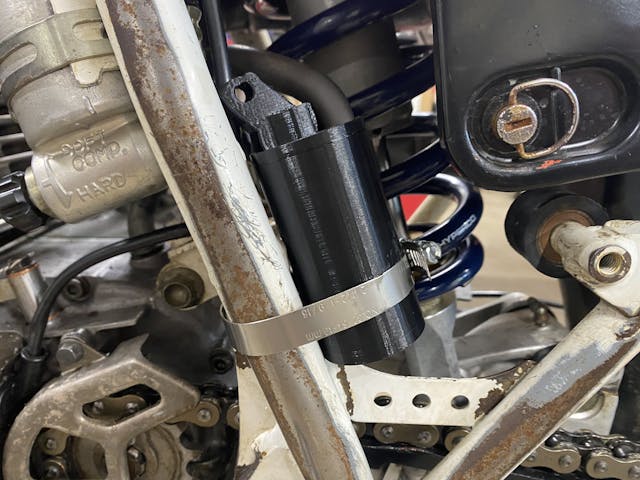
The catch can is a similar concept in that it exists to catch any overflows or vented fluids that should not find their way to the track surface. The carburetor vent and overflow, along with the crankcase vent, are routed to a simple catch-can hose clamped to the frame.
The bike is now ready to load into the van and head south for the weekend. Friday will be the AHRMA Academy of Roadracing which, should I pass, will get me my license to race with the organization. This is a weekend about learning, getting comfortable, and sorting out the bike. A later weekend will pit me against the other Sound of Singles Motard competitors. The physical part is ready for this relatively idiotic adventure, now I need to dial into the mental aspect.
